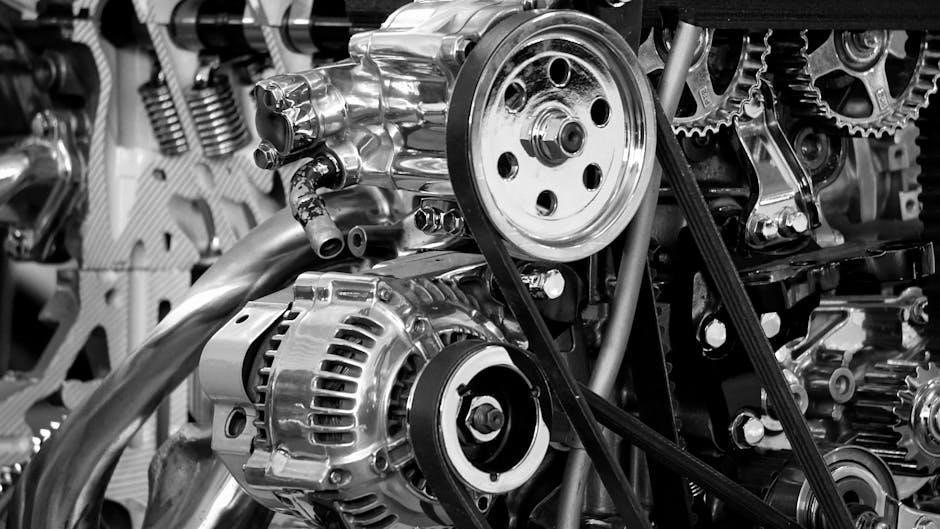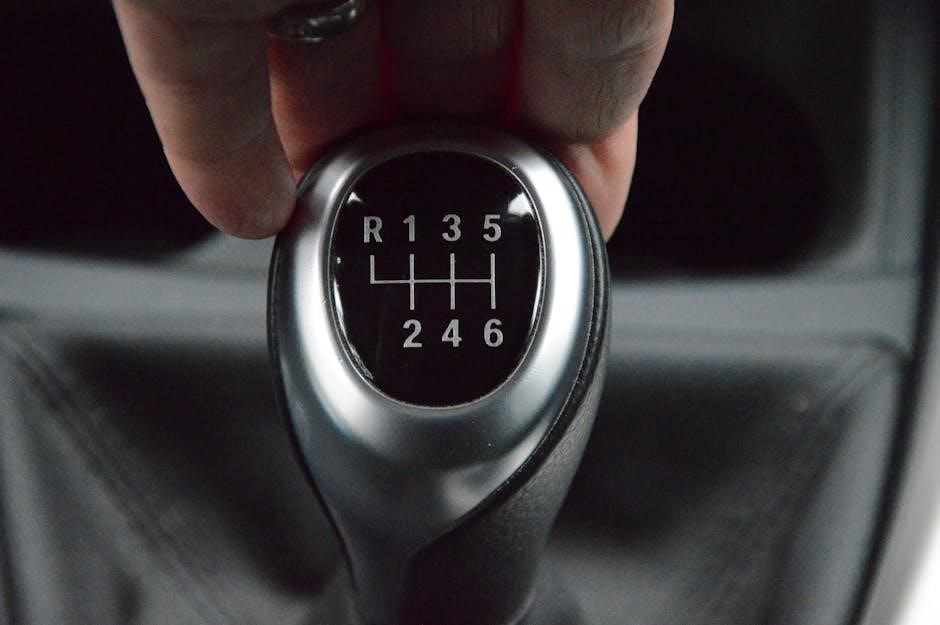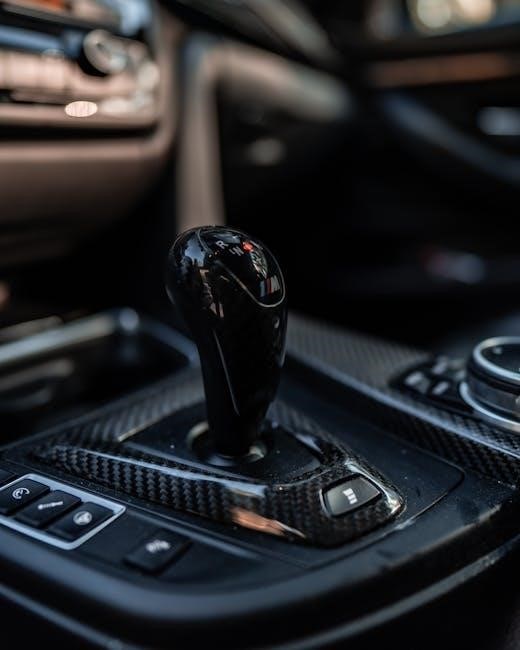Manual transmissions offer improved fuel efficiency, greater control, and lower costs, making them appealing for driving enthusiasts. However, they require skill, can be tiring in traffic, and may not be accessible to all drivers due to the learning curve and maintenance needs.

A manual transmission, also known as a stick shift, is a type of gearbox that requires the driver to manually change gears using a clutch pedal and a gearshift. Unlike automatic transmissions, manual transmissions rely on the driver’s input to engage and disengage the engine from the wheels. This hands-on approach allows for greater control over the vehicle’s performance, making it a popular choice among driving enthusiasts. The mechanical simplicity of manual transmissions often results in better fuel efficiency, lower costs, and a more engaging driving experience. However, it also demands a higher level of skill and attention from the driver.
Advantages of Manual Transmissions
Manual transmissions offer several advantages, including enhanced fuel efficiency, lower purchase and maintenance costs, and greater control over the vehicle. These transmissions are mechanically simpler, which reduces weight and improves performance. Drivers can experience a more engaging and enjoyable driving experience due to the ability to manually shift gears. Additionally, manual transmissions often require less expensive repairs and are generally more durable than automatics. Overall, manual transmissions provide a cost-effective and performance-oriented driving solution for those willing to learn and master the skill of manual shifting.
Improved Fuel Efficiency
Manual transmissions often provide better fuel efficiency, especially in city driving, due to the driver’s ability to control gear shifts precisely. This reduces unnecessary fuel consumption and lowers emissions. The mechanical simplicity of manual transmissions results in less energy loss compared to automatics, which often have more complex components. While modern automatic transmissions have improved, manuals still generally offer superior fuel economy, making them a more cost-effective and environmentally friendly option for drivers seeking to minimize their fuel costs and reduce their carbon footprint.

Greater Control and Performance
Manual transmissions offer drivers greater control over their vehicle, allowing precise gear shifts that match their driving style. This connectivity enhances performance, as drivers can optimize acceleration and deceleration. In situations requiring quick responses, such as merging onto highways or navigating winding roads, manuals provide a more direct link between the driver and the car. The ability to downshift for engine braking also improves control during descents. This level of engagement and responsiveness makes driving more enjoyable and rewarding, particularly for enthusiasts who value a hands-on driving experience and the satisfaction of mastering the clutch and gearshift.
Cost-Effectiveness
Manual transmissions are generally more affordable than automatics, both in purchase price and maintenance. They typically have fewer components, reducing production costs and the likelihood of expensive repairs. Over time, the lower cost of ownership adds up, making manuals a budget-friendly option. Additionally, manual vehicles often retain better resale value due to their popularity among driving enthusiasts. This combination of initial savings and long-term financial benefits makes manual transmissions an economical choice for many drivers seeking a cost-effective yet engaging driving experience.
Enhanced Driving Engagement
Manual transmissions foster a deeper connection between the driver and the vehicle, offering a more engaging and immersive driving experience. The act of shifting gears and controlling the clutch allows drivers to feel more in tune with the car’s performance, creating a sense of mastery and satisfaction. This hands-on interaction makes driving more enjoyable and rewarding, especially for enthusiasts who appreciate the thrill of driving. The ability to manually control gear changes also provides a greater sense of control, making every drive feel more intentional and connected, which is why many drivers prefer manuals for their sheer driving pleasure.

Disadvantages of Manual Transmissions

Manual transmissions present several drawbacks that may deter some drivers. One major disadvantage is the steeper learning curve, as mastering the clutch and gear shifting requires practice and patience. Additionally, manual transmissions can cause increased driver fatigue, especially in heavy traffic, where frequent gear changes and clutch usage become tedious. They also limit accessibility for drivers with physical disabilities or those unwilling to learn the skill. Furthermore, manual transmissions often require more maintenance and repairs compared to automatics, which can lead to higher long-term costs. These factors make manuals less practical for certain driving conditions and preferences.
Steeper Learning Curve
Mastering a manual transmission requires significant time and effort. Many find it challenging to coordinate the clutch pedal and gear shifts smoothly, especially in stop-and-go traffic. Novice drivers often struggle with stalling the vehicle, which can be frustrating and embarrassing. The process demands patience and practice to develop muscle memory and reflexes. Unlike automatics, where the car handles gear changes automatically, manuals necessitate active engagement, making the learning process more demanding. This steep learning curve can discourage some from opting for manual transmissions, despite their benefits.

Increased Driver Fatigue in Traffic
Manual transmissions can lead to increased driver fatigue, particularly in heavy traffic or stop-and-go situations. Constantly engaging and disengaging the clutch, along with frequent gear shifts, requires physical effort and mental focus. This repetitive action can become exhausting during long commutes or in congested urban areas. While manual driving can be rewarding on open roads, the constant demands of managing gears in traffic can leave drivers feeling drained. This fatigue is a notable drawback for those who frequently navigate busy city environments, where automatic transmissions offer a more relaxed driving experience.

Limited Accessibility for Some Drivers
Manual transmissions can be less accessible to certain groups of drivers. For individuals with physical disabilities affecting their ability to use a clutch pedal or manually shift gears, manual vehicles present significant challenges. Additionally, new drivers or those unfamiliar with manual transmissions may find the learning curve difficult, deterring them from choosing such vehicles. This limitation can reduce the availability of manual cars to a broader audience, making automatic transmissions a more inclusive option for many. As a result, manual cars may not be the best choice for everyone, particularly those seeking ease of use or accommodating specific needs.
Maintenance and Repair Challenges
Manual transmissions often require more maintenance and can be costlier to repair compared to automatics. The clutch, a key component, can wear out faster, especially with aggressive driving, leading to replacement costs. Additionally, manual transmissions have more moving parts, increasing the likelihood of mechanical issues over time. Finding skilled mechanics familiar with manual transmissions can also be challenging, potentially leading to higher repair costs. While manuals are generally durable, the need for specialized knowledge and parts can make maintenance and repairs more inconvenient and expensive in the long run compared to automatic transmissions.
Neutral Considerations
Manual transmissions fall into a gray area when comparing them to automatics, as preferences often depend on personal driving habits and regional norms. Technological advancements, such as dual-clutch transmissions, blur the line between manual and automatic, offering hybrid solutions. Additionally, the resale value of manual vehicles varies by market, with some regions valuing them more than others. Cultural influences also play a role, as manual transmissions are more common in certain parts of the world. Ultimately, the choice between manual and automatic depends on individual priorities, making it a neutral consideration in the broader context of driving preferences and needs.
Comparison to Automatic Transmissions
A manual transmission is often compared to an automatic in terms of ease of use, fuel efficiency, and driving experience. While automatics prioritize convenience and reduce driver fatigue in heavy traffic, manuals offer better control and engagement. Modern automatics have narrowed the gap in fuel efficiency, but manuals still hold a slight edge. Additionally, automatics are more common in urban areas due to their ease of use, whereas manuals are favored in regions with more open roads. Market demand for automatics has grown, but manuals remain popular among driving enthusiasts for their unique appeal and connection to the driving process.
Technological Advancements in Transmission Technology
Recent advancements in transmission technology have transformed both manual and automatic systems. Manual transmissions now feature improved synchronization, lighter clutch pedals, and more gear ratios for better performance. Automatics have evolved into continuously variable transmissions (CVTs) and dual-clutch automatics, offering smoother shifts and enhanced efficiency. Technological innovations have also led to hybrid and semi-automatic transmissions, blending the benefits of both types. These developments aim to address the drawbacks of traditional manuals, such as driver fatigue and complexity, while retaining their unique driving characteristics. As technology progresses, the gap between manual and automatic transmissions continues to narrow, providing drivers with more versatile options.
Regional and Cultural Preferences
Regional and cultural preferences significantly influence the popularity of manual transmissions. In Europe and parts of Asia, manuals are prevalent due to their fuel efficiency and driving enjoyment. Conversely, in the United States and some developing regions, automatics dominate, favored for their convenience and ease of use in heavy traffic. Cultural attitudes toward driving also play a role, with manual transmissions often associated with a more engaged and skilled driving experience in certain markets. These preferences shape market demand, impacting the availability and development of manual and automatic transmissions globally.

Environmental and Economic Impact
Manual transmissions can offer environmental benefits through better fuel efficiency, reducing emissions. Economically, they often cost less to purchase and maintain than automatics. However, regional preferences and technological advancements in automatics are shifting market dynamics. In regions favoring manuals, resale values remain strong, while areas dominated by automatics may see lower demand. The overall environmental and economic impact varies, balancing fuel savings against the declining market share of manual transmissions in some regions, influenced by cultural and technological trends. This dual impact highlights the complex interplay between environmental benefits and economic realities in transmission choices.
Fuel Efficiency and Emissions
Manual transmissions typically offer better fuel efficiency compared to automatics, especially in city driving, as drivers can control gear shifts to optimize engine performance. This leads to lower fuel consumption and reduced emissions, making manuals a more environmentally friendly choice. However, the gap narrows with modern automatics, which have improved significantly. Additionally, driving behavior plays a role, as aggressive shifting can negate efficiency gains. Overall, manuals generally provide a slight edge in reducing emissions and improving fuel economy, contributing to a smaller environmental footprint for drivers prioritizing eco-friendly transportation options.
Resale Value and Market Demand
Cars with manual transmissions often retain higher resale value, particularly in performance or enthusiast-oriented vehicles, as many drivers prefer the control and driving experience they offer. However, the overall demand for manual transmissions has declined in recent years, as automatic and dual-clutch transmissions gain popularity for their convenience. This shift reflects changing consumer preferences, with fewer drivers willing to learn manual shifting. Despite this, manuals remain sought after in niche markets, balancing their appeal between enthusiasts and the broader market’s move toward automation.

Manual transmissions offer significant advantages, including improved fuel efficiency, greater control, and lower costs, making them ideal for driving enthusiasts. However, they also present challenges such as a steeper learning curve and increased driver fatigue in heavy traffic. The decision to choose a manual transmission depends on personal preferences, driving habits, and lifestyle. While they may not suit everyone, especially in urban areas with frequent stops, manuals remain a popular choice for those who value the driving experience and long-term cost savings. Balancing these factors helps determine if a manual transmission is the right fit for individual needs.





